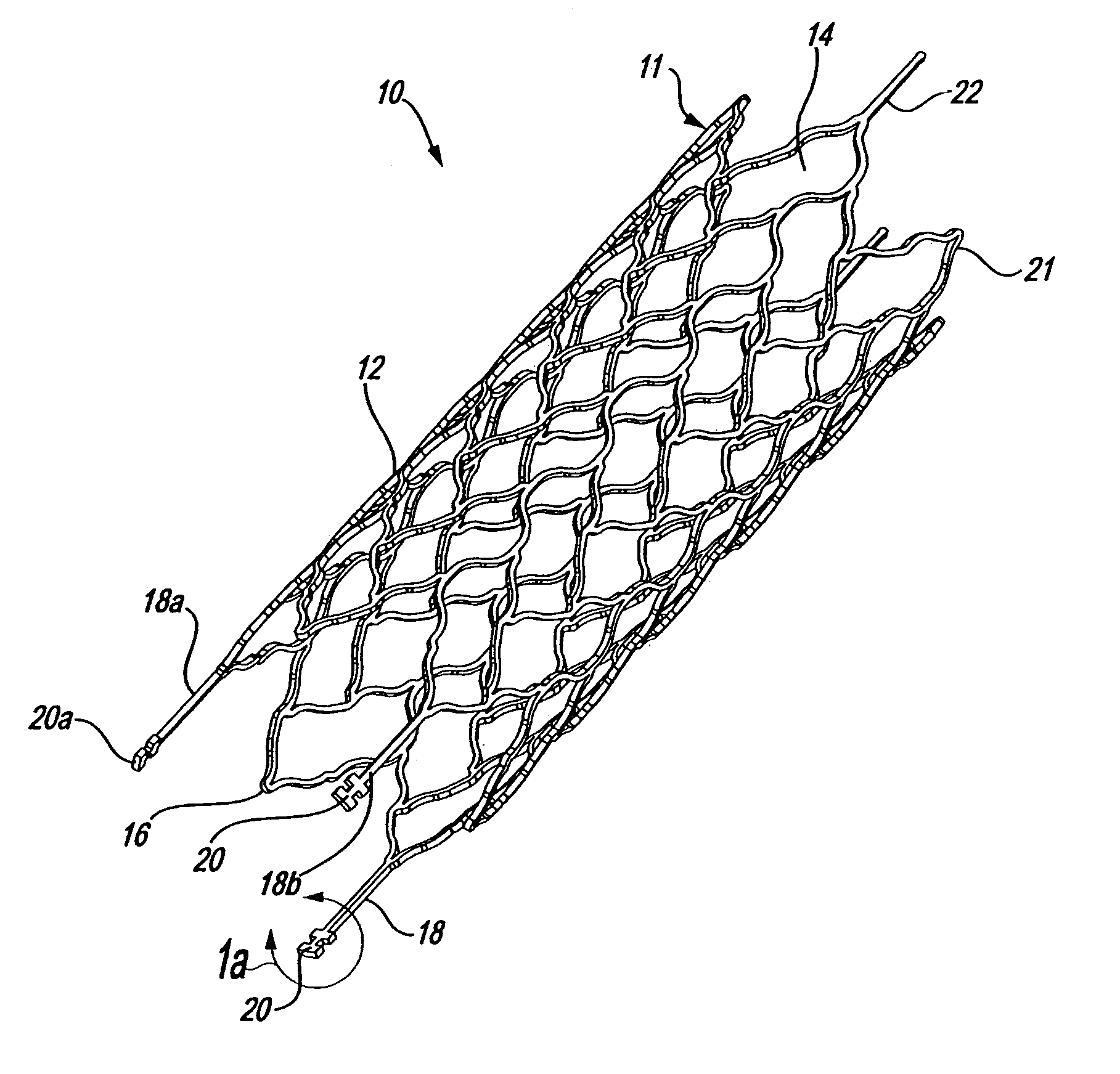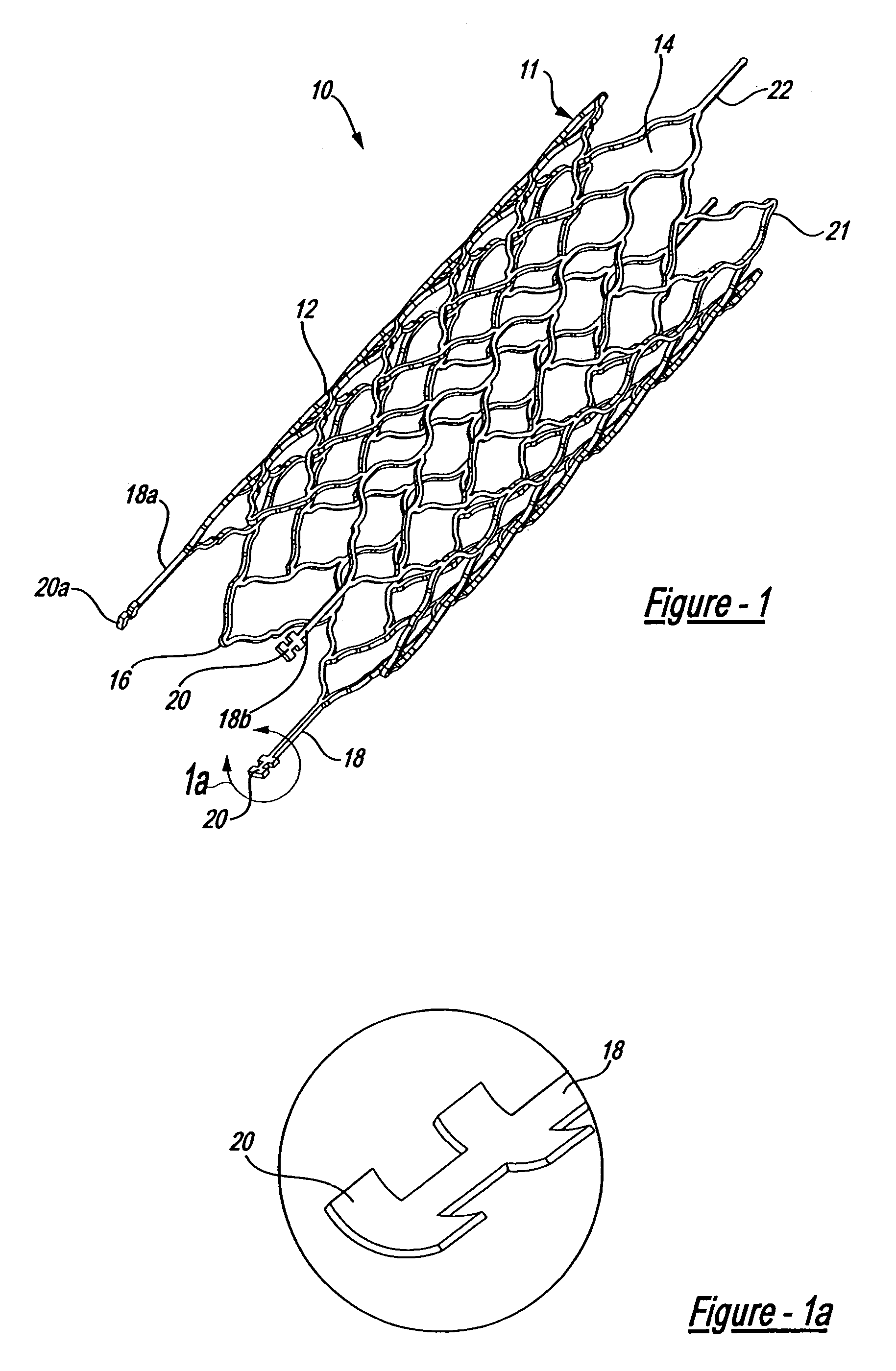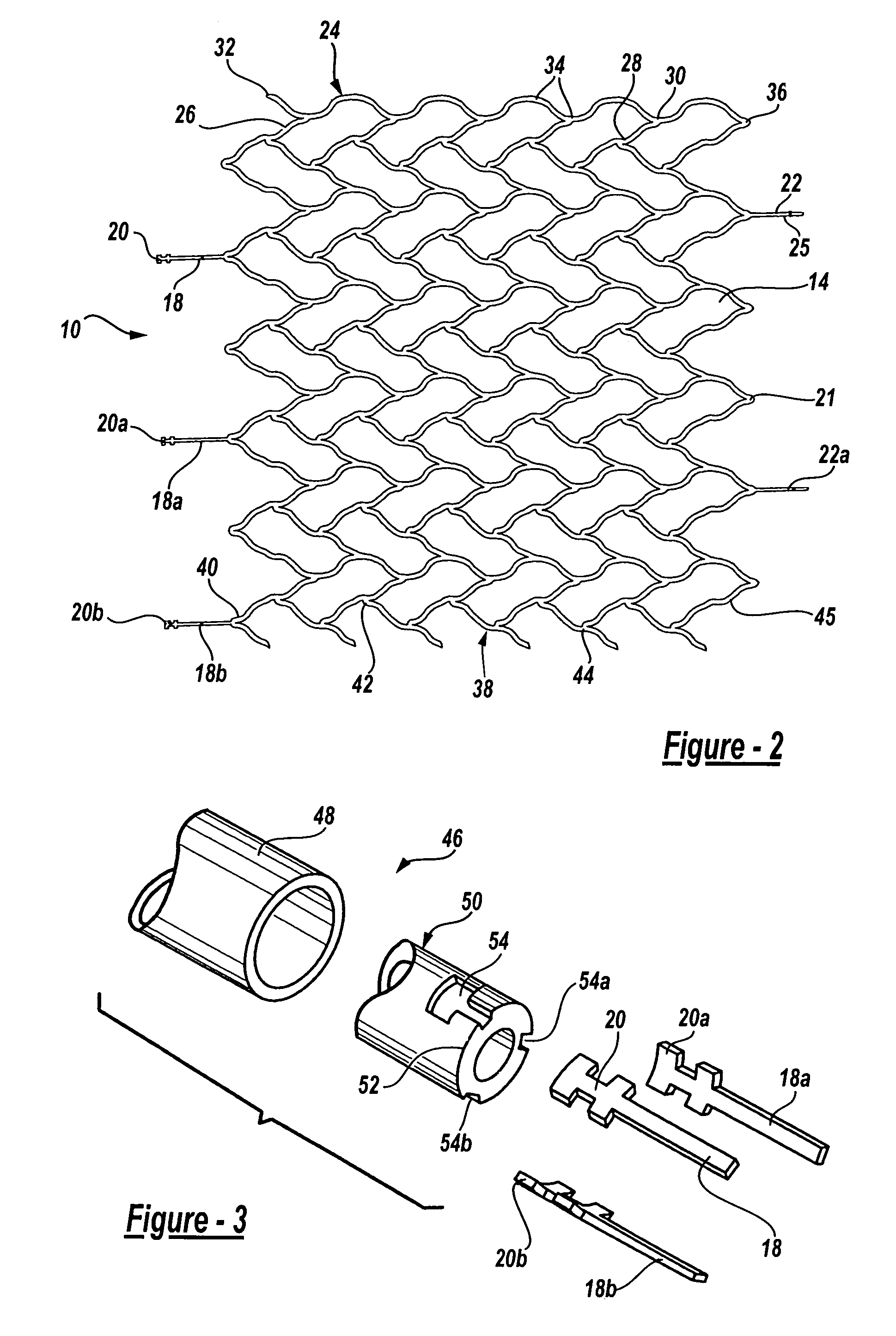Intravascular stent device
a stent and vascular technology, applied in the field of stent devices, can solve the problems of extremely small valves and tortuous throughout their length, and achieve the effect of improving the vascular permeability and vascular permeability
- Summary
- Abstract
- Description
- Claims
- Application Information
AI Technical Summary
Benefits of technology
Problems solved by technology
Method used
Image
Examples
Embodiment Construction
[0023]FIG. 1 illustrates a self-expanding stent device which is laser cut to form a thin-walled, skeletal tubular member 11 comprised of nickel-titanium alloy. Once cut, the wall of the tubular member 11 includes several openings, or cells 14. When the skeletal tubular member 11 is placed over an aneurysm, a physician is able to deliver embolic coils or other such devices through the cells 14 and into the aneurysm. The tubular member 11 also functions to cover the mouth of the aneurysm thus obstructing, or partially obstructing, the flow of blood into the aneurysm. Also, the tubular member 11 prevents medical devices such as embolic coils from escaping the aneurysm.
[0024]The preferred length of the skeletal tubular member 11 may range from 0.0795 inches to 3.15 inches. The diameter of the tubular member 11 varies depending on its deployment configuration. In a non-deployed or expanded state, the diameter of the tubular member 11 may extend up to about 0.4 inches. When the skeletal t...
PUM
 Login to View More
Login to View More Abstract
Description
Claims
Application Information
 Login to View More
Login to View More - R&D
- Intellectual Property
- Life Sciences
- Materials
- Tech Scout
- Unparalleled Data Quality
- Higher Quality Content
- 60% Fewer Hallucinations
Browse by: Latest US Patents, China's latest patents, Technical Efficacy Thesaurus, Application Domain, Technology Topic, Popular Technical Reports.
© 2025 PatSnap. All rights reserved.Legal|Privacy policy|Modern Slavery Act Transparency Statement|Sitemap|About US| Contact US: help@patsnap.com



